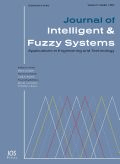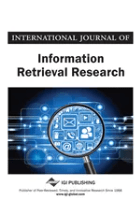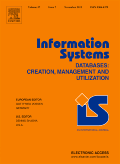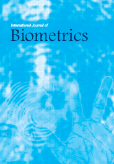
International Journal on Document Analysis and Recognition
Scope & Guideline
Advancing the Frontiers of Document Intelligence
Introduction
Aims and Scopes
- Document Image Analysis:
Research related to the extraction and recognition of text from images of documents, including handwritten, printed, and historical texts. - Machine Learning and AI Applications:
Utilization of machine learning, especially deep learning techniques, to improve recognition accuracy and efficiency in document analysis. - Layout Analysis and Structure Recognition:
Investigations into the segmentation and classification of document layouts, focusing on tables, figures, and complex structures. - Cross-lingual and Multilingual Recognition:
Studies that address the challenges of recognizing and processing documents in multiple languages and scripts. - Historical Document Preservation:
Techniques aimed at the analysis and recognition of historical documents, ensuring the preservation of cultural heritage. - Automated Systems and Tools:
Development of automated systems and software tools to streamline the processes of document recognition and analysis.
Trending and Emerging
- Deep Learning Innovations:
An increase in research utilizing advanced deep learning methods, such as transformers and GANs, for improved document recognition and analysis. - Document Layout and Structure Recognition:
A growing focus on understanding and processing complex document layouts, including tables and various graphics, signaling a trend towards comprehensive document understanding. - AI for Historical Document Analysis:
Emerging interest in applying AI techniques to the analysis of historical documents, which is crucial for cultural preservation and accessibility. - Semi-Supervised and Unsupervised Learning:
The adoption of semi-supervised and unsupervised learning methods is rising, addressing the need for efficient training with limited labeled data. - Privacy-Preserving Techniques:
Research on privacy-preserving methods in document analysis is gaining traction, highlighting the importance of safeguarding sensitive information during processing. - Integration of Multimodal Data:
A notable trend towards integrating multimodal data sources, such as combining text, images, and metadata, to enhance document analysis outcomes.
Declining or Waning
- Traditional OCR Techniques:
There is a noticeable decline in papers focusing solely on traditional optical character recognition (OCR) methods, as the field shifts towards more complex deep learning-based approaches. - Manual Feature Engineering:
The reliance on handcrafted features has decreased significantly, with a growing preference for automated feature learning through neural networks. - Single Language Focus:
Research centered on single-language document recognition is becoming less common, as the journal increasingly emphasizes multilingual and cross-lingual processing. - Static Document Analysis:
The exploration of static document analysis techniques is waning, with a move towards dynamic and real-time processing solutions. - Low-Complexity Models:
There is reduced emphasis on low-complexity models for document recognition, as advancements in computational power allow for more sophisticated models.
Similar Journals

JOURNAL OF INTELLIGENT & FUZZY SYSTEMS
Advancing the Frontiers of AI and Fuzzy SystemsJOURNAL OF INTELLIGENT & FUZZY SYSTEMS is a premier publication dedicated to advancing the field of artificial intelligence, fuzzy systems, and related engineering disciplines. Published by IOS PRESS, this journal plays a vital role in disseminating innovative research and methodologies that push the boundaries of knowledge from its inception in 1993 through 2024. With an impact factor underscoring its significance, it maintains a strong reputation for quality and rigor, achieving Q3 in Artificial Intelligence and Q2 in Engineering (miscellaneous) as reported in 2023. Researchers can access invaluable insights into current trends and applications, making it an essential resource for professionals and scholars alike. The journal welcomes contributions that bridge theoretical advancements and practical implementations, fostering a community of interdisciplinary collaboration. Situated in the heart of the Netherlands, the JOURNAL OF INTELLIGENT & FUZZY SYSTEMS is committed to enhancing understanding in the realms of mathematics, statistics, and probability, with Scopus rankings reflecting its competitive edge across various fields.

International Journal of Information Retrieval Research
Exploring innovative methodologies in data access.International Journal of Information Retrieval Research (ISSN: 2155-6377 | E-ISSN: 2155-6385) is an esteemed publication under the renowned IGI Global umbrella, dedicated to advancing the field of information retrieval through peer-reviewed research and innovative methodologies. With a focus on the intersection of computer science, data analytics, and library sciences, this journal serves as a vital resource for researchers, practitioners, and scholars seeking to explore the latest trends and practical applications in information retrieval systems. Although it does not currently offer Open Access options, the journal aims to reach a diverse audience by providing high-quality articles that drive discussions and forward research frontiers in this critical domain. The International Journal of Information Retrieval Research is pivotal for those seeking to enhance their understanding and application of information retrieval technologies in an increasingly data-driven world.

VISUAL COMPUTER
Unveiling the Artistry of Computational DesignVISUAL COMPUTER is a prestigious journal published by Springer, focusing on the dynamic fields of computer graphics, computer-aided design, computer vision, and software. Established in 1985, this interdisciplinary journal serves as a vital platform for sharing innovative research, applications, and developments crucial to the advancement of visual computing technologies. With a notable Q2 ranking in various categories, including Computer Graphics and Computer-Aided Design, and Computer Vision and Pattern Recognition, VISUAL COMPUTER demonstrates a solid impact within the academic community, marked by its Scopus rankings that reflect its significant contributions to the field. While the journal does not offer open access, it remains a reliable source of high-quality content for researchers, professionals, and students eager to stay abreast of emerging trends and techniques, ultimately fostering collaboration and knowledge exchange within the rapidly evolving landscape of visual computing.

CAAI Transactions on Intelligence Technology
Transforming Ideas into Intelligent SolutionsCAAI Transactions on Intelligence Technology is a premier peer-reviewed journal published by WILEY, dedicated to advancing the fields of Artificial Intelligence, Computer Networks and Communications, Computer Vision and Pattern Recognition, Human-Computer Interaction, and Information Systems. Since its inception in 2017, this Open Access journal has rapidly ascended the ranks, achieving Q1 quartile status across multiple categories as of 2023, and is recognized for its rigorous standards and innovative research dissemination, evidenced by impressive Scopus rankings, including Rank #12 in Computer Vision and Pattern Recognition. Through its commitment to providing a platform for high-quality research, the journal invites contributions from scholars globally, fostering a collaborative environment that stimulates intellectual exchange and encourages advancements in intelligent technology. Addressed to researchers, professionals, and students alike, CAAI Transactions on Intelligence Technology serves as a vital resource for those aiming to stay at the forefront of technological innovation.

Cognitive Computation and Systems
Fostering Collaboration in Cognitive Computation and Systems.Cognitive Computation and Systems is an innovative open-access journal published by Wiley, dedicated to advancing the fields of Artificial Intelligence, Cognitive Neuroscience, and Computer Science Applications. Based in the United Kingdom, this journal has established itself as a key resource for researchers, students, and professionals alike since its inception in 2019. With a focus on the convergence of cognitive theories and computational methodologies, Cognitive Computation and Systems aims to publish high-quality research that bridges holistic cognitive processing with algorithmic design. Although the journal is currently categorized in the lower quartiles of its fields, it provides a unique platform for disseminating pioneering ideas that can drive the vital intersection of computer vision, pattern recognition, and psychology. Scholars can take advantage of its open-access model, ensuring that research findings are freely available, thus promoting wider knowledge sharing and collaboration within these rapidly evolving domains. With its ambitious scope and commitment to quality, this journal is poised to make a significant impact in its respective fields.

INFORMATION SYSTEMS
Fostering collaboration between academia and industry in Information Systems.INFORMATION SYSTEMS is a premier journal published by PERGAMON-ELSEVIER SCIENCE LTD, dedicated to advancing the fields of Information Systems, Hardware and Architecture, and Software. With its ISSN 0306-4379 and E-ISSN 1873-6076, this prestigious journal has established a significant presence in the academic community since its inception in 1975, paving the way for innovative research that continues through 2025. Ranked within the Q1 quartile across its core categories, INFORMATION SYSTEMS holds a notable position, with Scopus rankings including #28 in Computer Science - Hardware and Architecture and #64 in Software, both in the 84th percentile. Although it currently does not offer open access, the journal thrives as a vital resource for researchers, professionals, and students, fostering an environment where cutting-edge studies and industry applications converge. Housed in the United Kingdom, at The Boulevard, Langford Lane, Kidlington, Oxford OX5 1GB, England, this journal highlights its commitment to driving scholarly advancements and supporting the evolution of information technologies.

JOURNAL OF MATHEMATICAL IMAGING AND VISION
Advancing the Frontiers of Mathematical Imaging and VisionJOURNAL OF MATHEMATICAL IMAGING AND VISION, published by Springer, stands as a significant platform for advancing the fields of applied mathematics, computer vision, and pattern recognition, among others. With an ISSN of 0924-9907 and an E-ISSN of 1573-7683, this esteemed journal is based in the Netherlands and has been contributing to the scholarly discourse since its inception in 1992, with a converged focus through 2024. It has achieved reputable standings within several quartiles, including Q2 rankings across applied mathematics, geometry and topology, and condensed matter physics, reflecting its impact and relevance. Notably, the journal ranks within the top 5% in Geometry and Topology and maintains robust standings in Statistics and Probability. The JOURNAL OF MATHEMATICAL IMAGING AND VISION is dedicated to publishing high-quality research that bridges theoretical perspectives with practical applications, making it an essential resource for researchers, professionals, and students who are exploring the cutting-edge of mathematical imaging and its interdisciplinary applications.

International Journal of Biometrics
Exploring New Dimensions in Biometric TechnologiesInternational Journal of Biometrics is a distinguished platform dedicated to advancing research in the multifaceted areas of biometrics and its applications across various disciplines. Published by InderScience Enterprises Ltd in the United Kingdom, this journal serves as a vital resource for researchers, professionals, and students involved in applied mathematics, computer science, and electrical engineering. With an ISSN of 1755-8301 and an E-ISSN of 1755-831X, the journal provides a curated collection of innovative studies and reviews that contribute to understanding and improving biometric technologies. As of 2023, it holds a Q4 ranking across several relevant categories, reflecting its commitment to fostering knowledge in an emerging field. Though currently non-open access, it remains accessible to academic institutions and professionals, aiming to bridge gaps in biometrics research and practice. The journal covers a wide scope of topics, notifying readers about essential developments in image processing, pattern recognition, and electronic engineering applications, making it an indispensable resource for anyone interested in the dynamic field of biometrics.

COMPUTER SPEECH AND LANGUAGE
Exploring Innovations in Speech and Language TechnologiesCOMPUTER SPEECH AND LANGUAGE, published by Academic Press Ltd - Elsevier Science Ltd, stands as a pivotal journal in the fields of Human-Computer Interaction, Software, and Theoretical Computer Science. With an esteemed Q2 ranking in Human-Computer Interaction and top-tier Q1 rankings in both Software and Theoretical Computer Science for 2023, this journal plays a critical role in disseminating innovative research and advancements in computational linguistics and interactive systems. Since its inception in 1986, it has become a sought-after platform for researchers, professionals, and students seeking to deepen their understanding of computer-aided speech processes and language technologies. The journal's comprehensive scope encompasses a wide range of interdisciplinary studies, fostering a collaborative research environment that explores the intersection of technology and human communication.

JOURNAL OF VISUAL COMMUNICATION AND IMAGE REPRESENTATION
Exploring the Art and Science of Image RepresentationJOURNAL OF VISUAL COMMUNICATION AND IMAGE REPRESENTATION, published by Academic Press Inc Elsevier Science, is an influential platform dedicated to the realms of visual communication, media technology, and advanced image representation. With a strong focus on interdisciplinary approaches, this journal aims to foster the exchange of innovative ideas among researchers and professionals in the fields of computer vision, image processing, and signal processing. Recognized for its significance, it boasts an impressive impact factor within its category quartiles; notably, it ranks Q2 in Computer Vision and Pattern Recognition and Electrical and Electronic Engineering, while achieving Q1 in Media Technology. Based in the United States, the journal not only provides valuable insights into the latest developments from 1990 to 2024 but also encourages cutting-edge research that enhances multimedia systems and user interactions. As a vital resource for students, researchers, and industry professionals alike, the journal ensures a robust understanding of visual information processing, critical for navigating today's digital landscape.